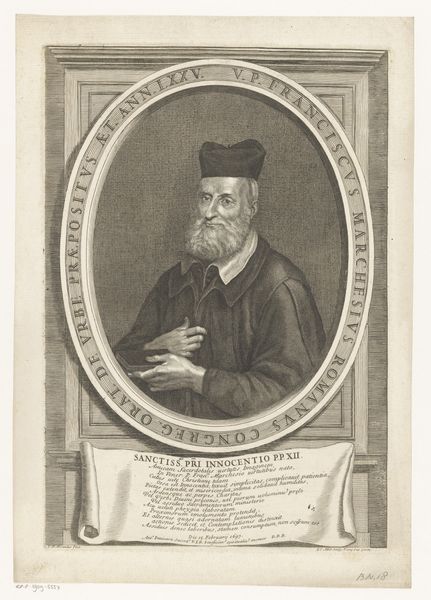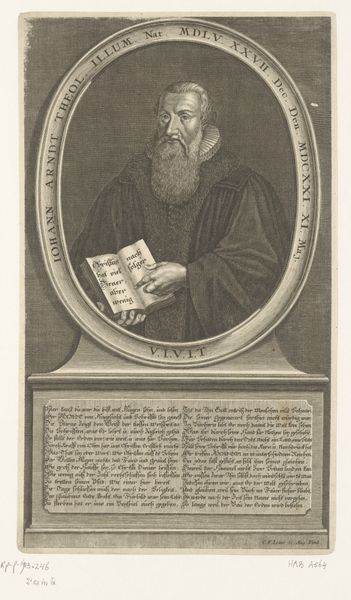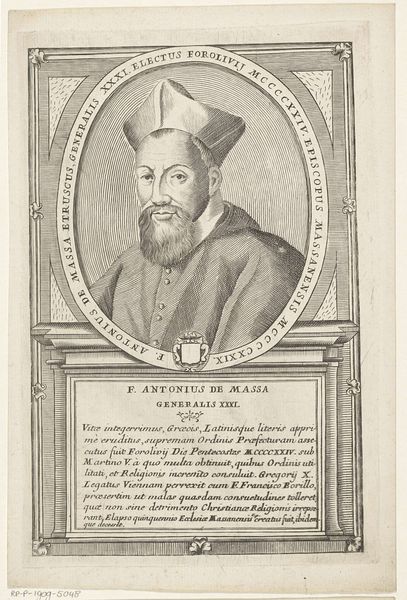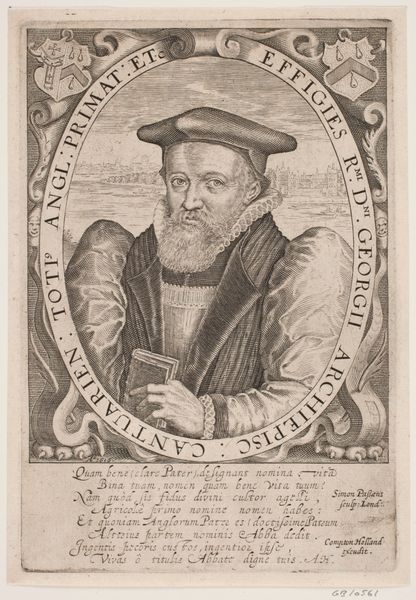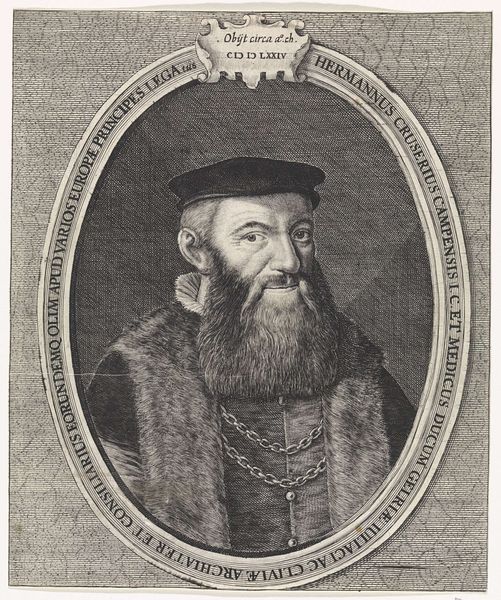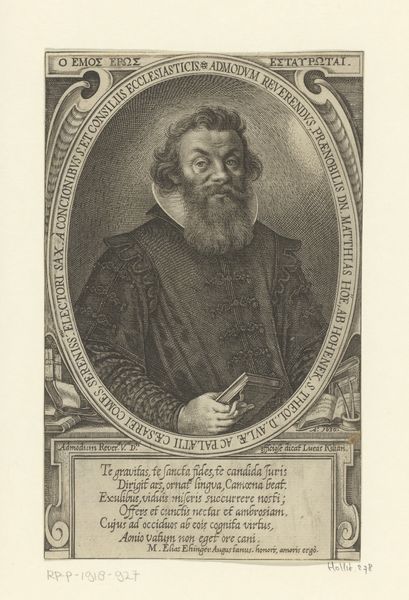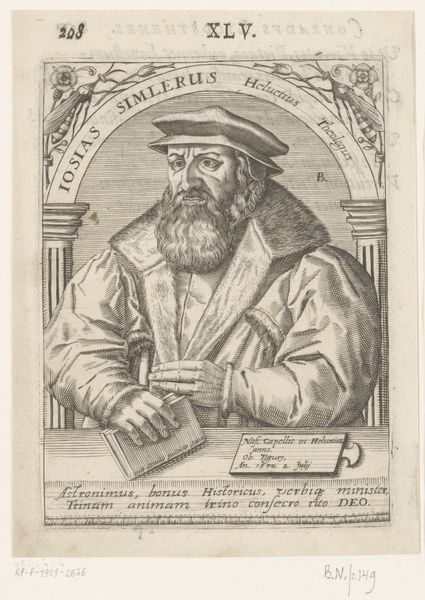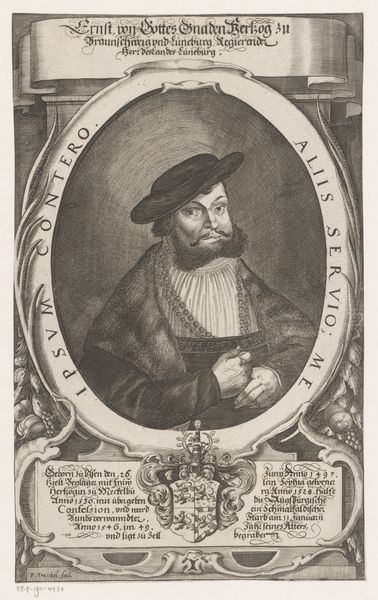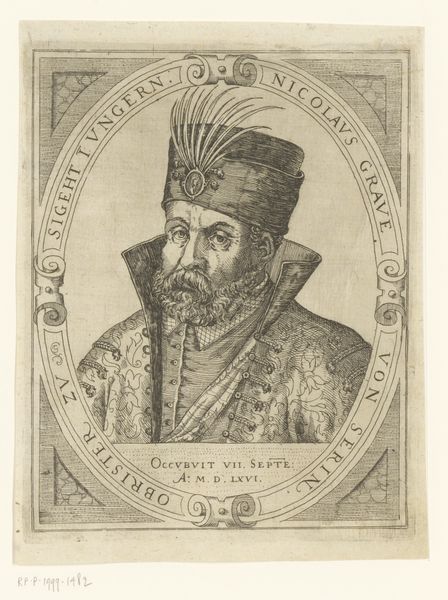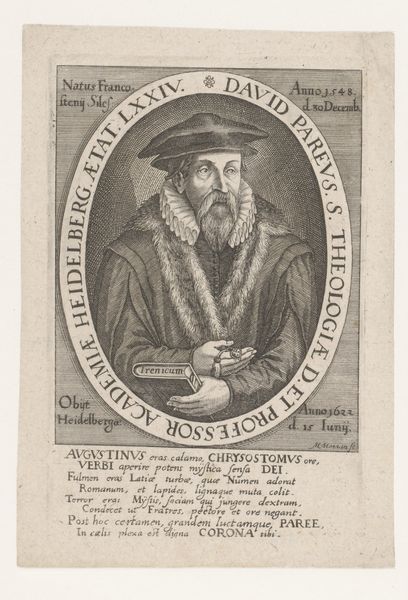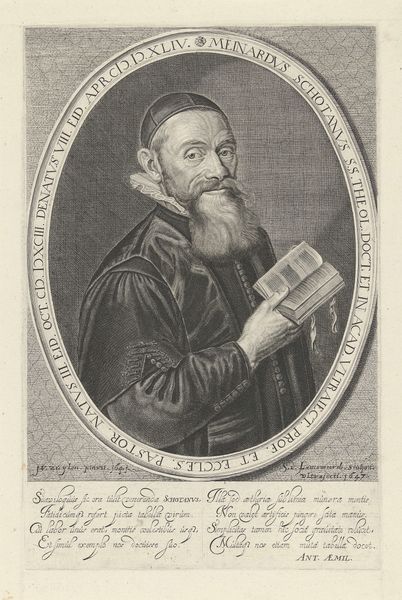
print, engraving
#
portrait
# print
#
charcoal drawing
#
11_renaissance
#
19th century
#
history-painting
#
engraving
#
realism
Dimensions: height 249 mm, width 184 mm
Copyright: Rijks Museum: Open Domain
Curator: So, here we have "Portret van Nostradamus op 62-jarige leeftijd," from 1716. It's currently held in the Rijksmuseum. This portrait of Nostradamus is a print; more specifically, an engraving. What strikes you about it initially? Editor: Well, the detail is quite remarkable for a print from that period. There's something serious, even austere, about his expression and dress. How do you interpret this work? Curator: As a materialist, I’m interested in how the print medium shapes the representation of Nostradamus. The very act of creating an engraving involves a labor-intensive process – the careful carving of lines into a metal plate, inking, and pressing. Editor: That’s interesting. I hadn't thought about the physical work behind it. Curator: This production aspect contrasts with the mystique of Nostradamus. The print democratizes his image. What was once confined perhaps to painted portraits for the wealthy, now becomes reproducible, circulating widely. The consumption of the image becomes more accessible, though its interpretation still relies on knowledge and cultural context. Editor: So, the means of production influences how we see the subject? Curator: Precisely. It removes him slightly from the realm of pure mystery. We must consider the labor that creates the image, the market for such prints, and how the dissemination impacts Nostradamus’s reputation and enduring fame. Are there elements suggesting to you that is wasn't just about accurately capturing his likeness? Editor: Now that you mention it, the elaborate inscription and bordering details are visually distinct; they feel almost as important as Nostradamus himself. Curator: They're integral to the artwork's meaning and function. Think about the economics involved: producing the print, its trade and consumption by specific audiences in society, versus what that would involve with a traditional painting. It tells us so much about the work involved and even more, about art’s circulation in the early 18th century. Editor: I’m starting to see the print as more than just an image, but a product of its time. It’s definitely a different lens than I usually use when approaching art. Curator: Indeed, considering these elements unveils the art's story woven with the material and cultural conditions of its creation and dissemination.
Comments
No comments
Be the first to comment and join the conversation on the ultimate creative platform.

